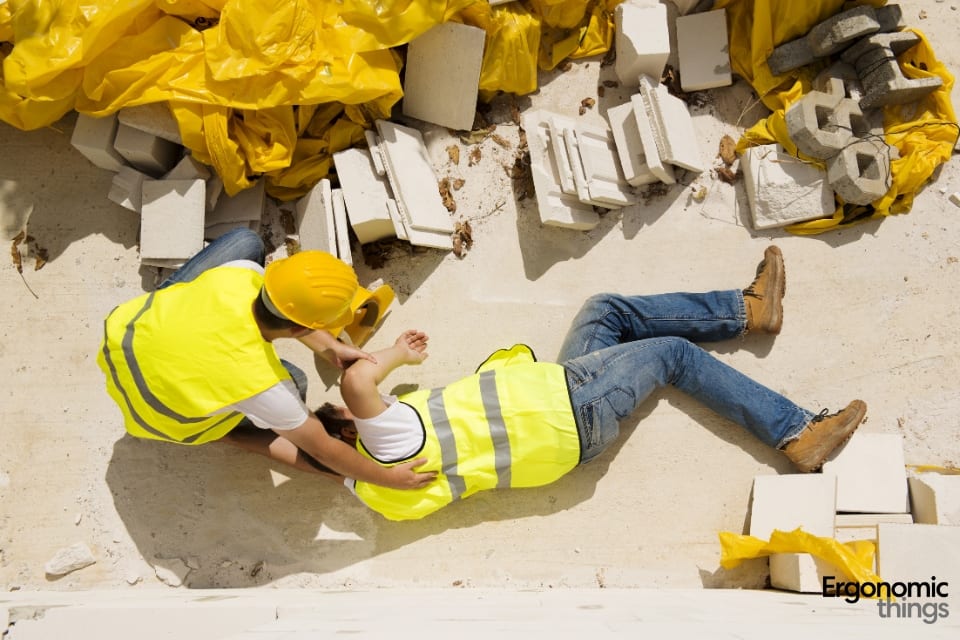Have you ever thought about how the construction site, with all its bustling activity and heavy machinery, could be as finely tuned as a ballet, ensuring every worker moves smoothly and safely? Just like dancers, construction workers perform their tasks in a highly physical environment, but without the proper precautions, this environment can lead to a range of ergonomic injuries. Let’s dive into how we can prevent these injuries and keep our construction sites as harmonious and injury-free as a well-rehearsed performance.
Understanding Ergonomic Injuries
Ergonomic injuries, or musculoskeletal disorders (MSDs), are injuries that can happen when the demands of a task do not match the capabilities of a worker. Imagine bending over all day or lifting heavy objects incorrectly; it’s like fitting a square peg into a round hole, sooner or later, something’s got to give.
The Importance of Ergonomic Safety
Ensuring ergonomic safety is like putting the right key into a lock; it unlocks the potential for a safer, more productive work environment. It’s not just about preventing injuries; it’s about promoting overall well-being and efficiency on the construction site.
Identifying Risks on the Construction Site
Identifying risks is the first step in our prevention ballet. It involves understanding the dance floor, or in our case, the construction site, and recognizing where the missteps could happen. This could be anything from repetitive motions to improper handling of materials.
Implementing Effective Solutions
Once we’ve identified the risks, it’s time to choreograph our solutions. This might involve adjusting work practices, providing the right tools, or redesigning workstations to ensure every move on our construction site is safe and efficient.
Training and Awareness
Knowledge is power, and in our quest to prevent ergonomic injuries, it’s our most valuable tool. Training and awareness programs are like rehearsals, ensuring every worker knows the steps to take to avoid injury.
Equipment and Tools for Ergonomic Safety
Choosing the right equipment and tools is akin to a dancer selecting the right shoes. They must be perfectly suited to the task to prevent strain and injury, from ergonomic tools that reduce the need for bending and reaching to machinery that takes the load off human muscles.
Personal Protective Equipment (PPE)
PPE is the costume of our safety ballet, designed to protect workers from harm. From gloves that enhance grip to supports that brace the back during heavy lifting, PPE is an essential layer of protection.
Regular Breaks and Stretching
Taking regular breaks and incorporating stretching into the workday is like the intermission in a performance, giving workers the chance to rest and reset, reducing the risk of injury.
Monitoring and Feedback
Continuous monitoring and feedback ensure our safety measures are working as intended. It’s like watching a playback of a performance to spot and correct any missteps.
The Role of Technology in Preventing Injuries
Technology can play a leading role in our safety ballet, from wearables that alert workers to hazardous postures to software that designs safer work environments.
Creating an Ergonomic Culture
Creating an ergonomic culture on the construction site means making safety a part of every decision and action. It’s about building a community where everyone is committed to moving safely and efficiently.
Preventing ergonomic injuries on the construction site is not just about following regulations; it’s about creating an environment where safety is a part of the culture. By understanding the risks, implementing effective solutions, and fostering an environment of awareness and continuous improvement, we can protect our workers and ensure the longevity of their careers.
FAQs
- What are ergonomic injuries? Ergonomic injuries, or musculoskeletal disorders (MSDs), are injuries that result from the physical demands of a task not matching the worker’s capabilities.
- How can we identify ergonomic risks on a construction site? Identifying risks involves observing the tasks being performed, the equipment being used, and the environment workers are in to pinpoint where injuries could occur.
- What role does PPE play in preventing ergonomic injuries? PPE acts as a protective barrier against injuries, supporting the body during tasks that could lead to strain or injury.
- Why is training important in preventing ergonomic injuries? Training equips workers with the knowledge and skills to perform their tasks safely, reducing the risk of injury.
- How can technology help in preventing ergonomic injuries? Technology, such as wearables and ergonomic design software, can alert workers to unsafe practices and help design safer work environments.

